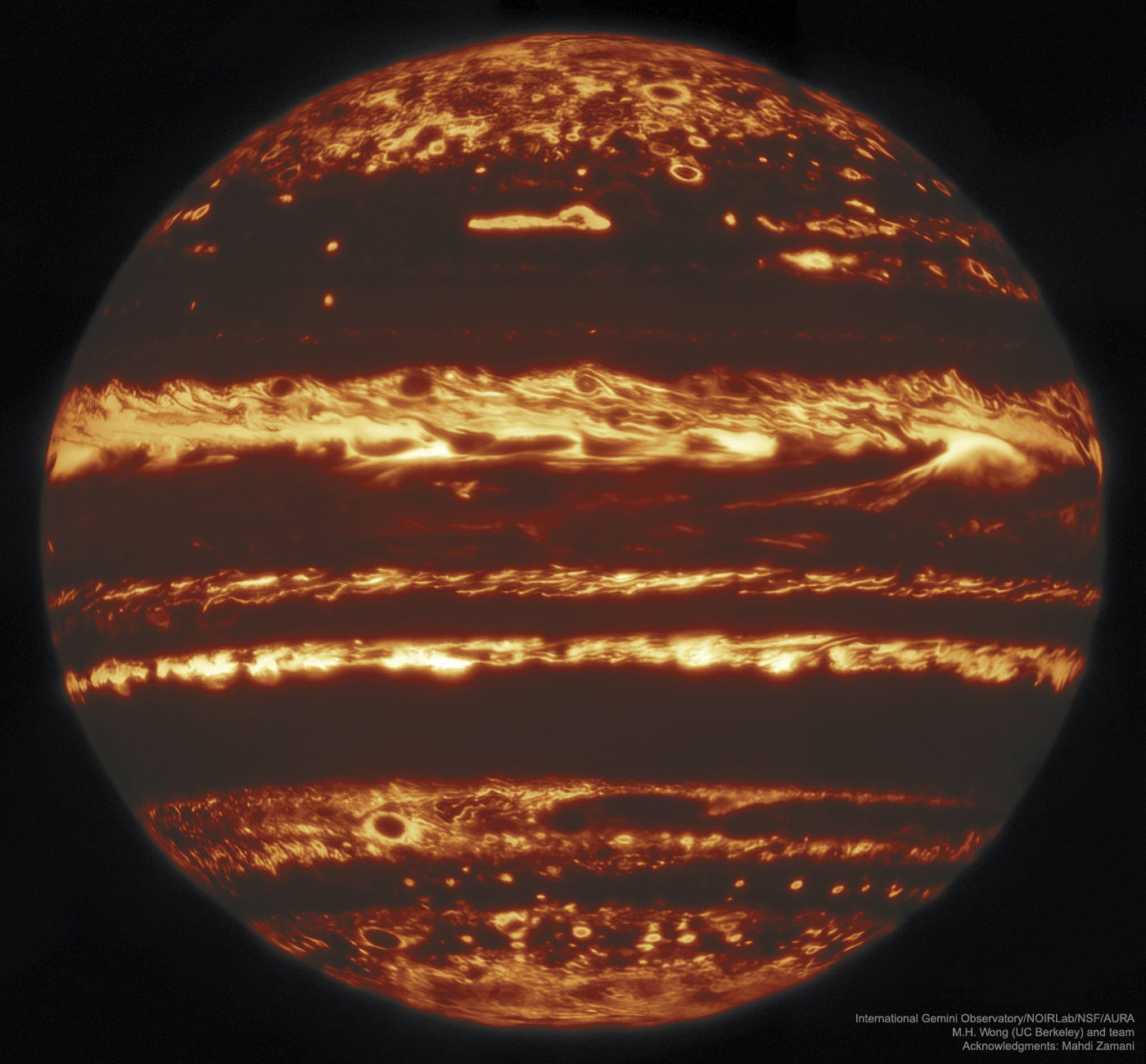2020 May 13
Jupiter in Infrared from Gemini
Image Credit: International Gemini Observatory, NOIRLab, NSF, AURA; M. H. Wong (UC Berkeley) & Team;
Acknowledgment: Mahdi Zamani; Text: Alex R. Howe (NASA/USRA, Reader’s History of SciFi Podcast)
Explanation: In infrared, Jupiter lights up the night. Recently, astronomers at the Gemini North Observatory in Hawaii, USA, created some of the best infrared photos of Jupiter ever taken from Earth’s surface, pictured. Gemini was able to produce such a clear image using a technique called lucky imaging, by taking many images and combining only the clearest ones that, by chance, were taken when Earth’s atmosphere was the most calm. Jupiter’s jack-o’-lantern-like appearance is caused by the planet’s different layers of clouds. Infrared light can pass through clouds better than visible light, allowing us to see deeper, hotter layers of Jupiter’s atmosphere, while the thickest clouds appear dark. These pictures, together with ones from the Hubble Space Telescope and the Juno spacecraft, can tell us a lot about weather patterns on Jupiter, like where its massive, planet-sized storms form.
Notable APOD Submissions: Flower Moon 2020
Tomorrow’s picture: open space
双子望远镜拍摄的红外光木星影像
影像提供: International Gemini Observatory, NOIRLab, NSF, AURA; M. H. Wong (UC Berkeley) & Team;
志谢: Mahdi Zamani; 文稿: Alex R. Howe (NASA/USRA, Reader’s History of SciFi Podcast)
说明: 在红外光波段,木星照亮了地球的夜空。美国·夏威夷·北双子天文台的天文学家,最近从地表拍摄了一批木星最清晰的红外光照片,如这幅主题影像所示。双子望远镜之所以能拍到这么清晰的影像,是使用名为幸运成像的技术,先拍摄许多照片,然后挑出恰好摄于地球大气最稳定时的清晰照片,最后再加以叠加组合。这幅“ 万圣节南瓜灯 ” 模样的木星,其成因是木星的层状大气。因为红外光穿透云的能力高于可见光,因此红外光影像,让我们得以窥见较热较深层的木星大气,其中最黝黑的区域云层最厚。这些影像,再加上来自哈伯太空望远镜和朱诺号太空船的影像,透露了许多攸关木星天气型态的讯息,诸如它庞大行星规模的风暴系统会形成于何处。
Notable APOD Submissions: Flower Moon 2020
明日的图片: open space



